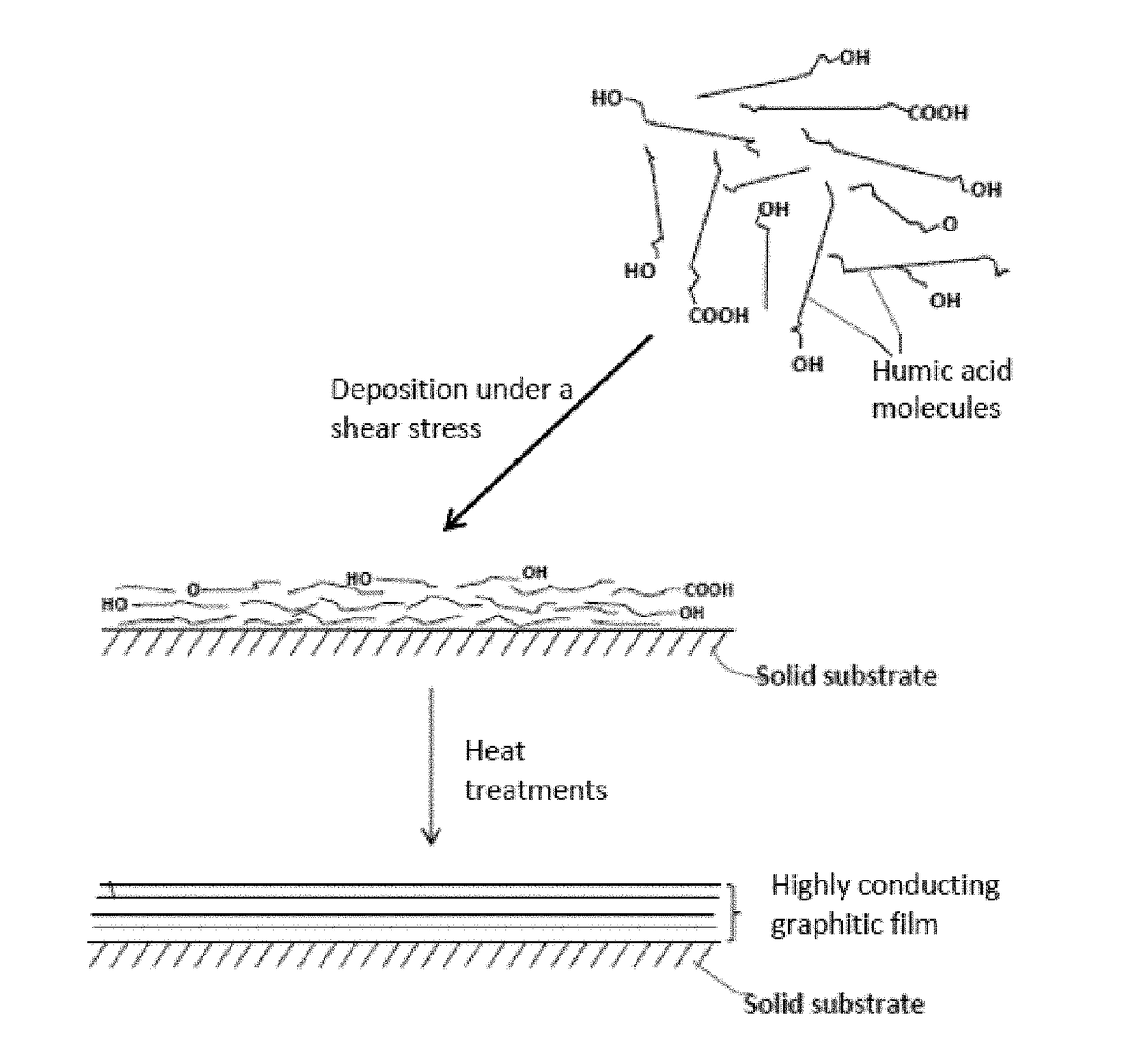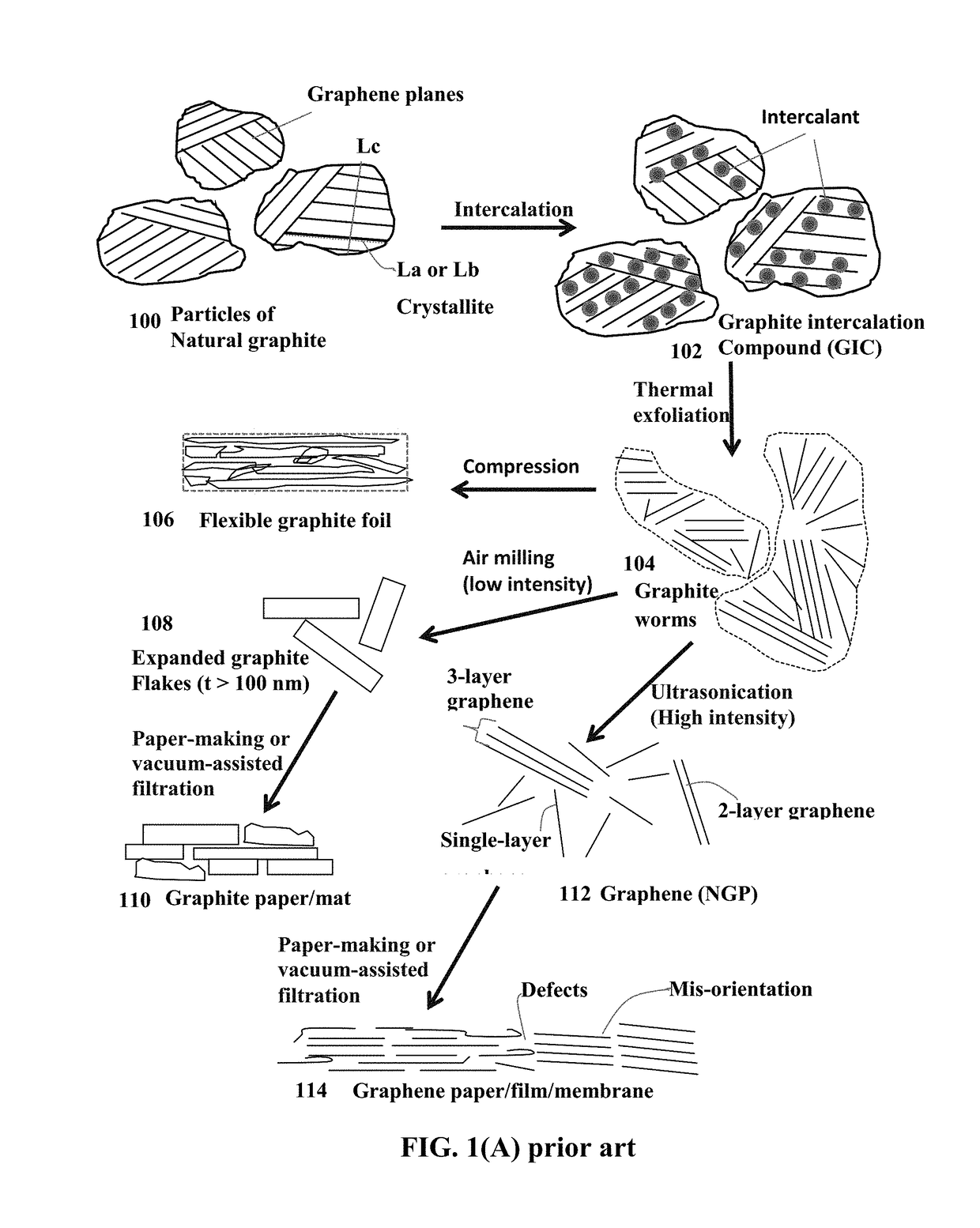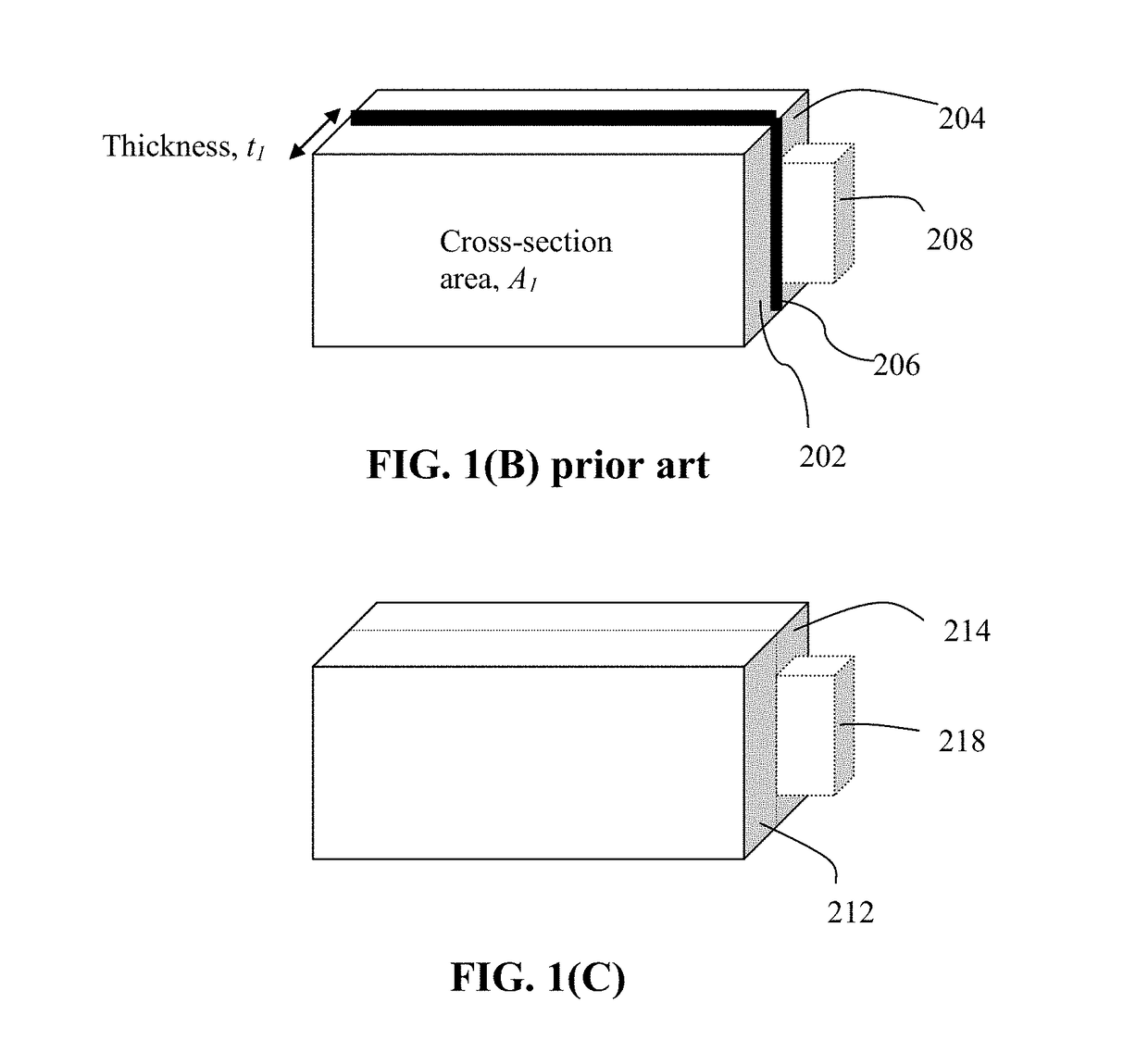Humic acid-bonded metal foil film current collector and battery and supercapacitor containing same
a technology of metal foil film and current collector, which is applied in the direction of cell components, electrochemical generators, electrode manufacturing processes, etc., to achieve the effect of increasing the length or width of the planar molecules or sheets
- Summary
- Abstract
- Description
- Claims
- Application Information
AI Technical Summary
Benefits of technology
Problems solved by technology
Method used
Image
Examples
example 1
Humic Acid and Reduced Humic Acid from Leonardite
[0162]Humic acid can be extracted from leonardite by dispersing leonardite in a basic aqueous solution (pH of 10) with a very high yield (in the range of 75%). Subsequent acidification of the solution leads to precipitation of humic acid powder. In an experiment, 3 g of leonardite was dissolved by 300 ml of double deionized water containing 1M KOH (or NH4OH) solution under magnetic stirring. The pH value was adjusted to 10. The solution was then filtered to remove any big particles or any residual impurities.
[0163]The resulting humic acid dispersion, containing HA alone or HA with the presence of graphene oxide sheets (GO prepared in Example 3 described below), was coated onto a Cu foil or Ti foil surface form a series of HA-bonded Cu foil or Ti foil films for subsequent heat treatments to obtain Type-A current collectors.
[0164]For comparison, similar films were cast onto glass surface and then peeled off prior to subsequent heat trea...
example 2
Preparation of Humic Acid from Coal and HA-Bonded Metal Foil Current Collectors
[0165]In a typical procedure, 300 mg of coal was suspended in concentrated sulfuric acid (60 ml) and nitric acid (20 ml), and followed by cup sonication for 2 h. The reaction was then stirred and heated in an oil bath at 100 or 120° C. for 24 h. The solution was cooled to room temperature and poured into a beaker containing 100 ml ice, followed by a step of adding NaOH (3M) until the pH value reached 7.
[0166]In one experiment, the neutral mixture was then filtered through a 0.45-mm polytetrafluoroethylene membrane and the filtrate was dialyzed in 1,000 Da dialysis bag for 5 days. For the larger humic acid sheets, the time can be shortened to 1 to 2 h using cross-flow ultrafiltration. After purification, the solution was concentrated using rotary evaporation to obtain solid humic acid sheets. These humic sheets alone and their mixtures with graphene sheets were re-dispersed in a solvent (ethylene glycol an...
example 3
Preparation of Graphene Oxide (GO) Sheets from Natural Graphite Powder
[0167]Natural graphite from Ashbury Carbons was used as the starting material. GO was obtained by following the well-known modified Hummers method, which involved two oxidation stages. In a typical procedure, the first oxidation was achieved in the following conditions: 1100 mg of graphite was placed in a 1000 mL boiling flask. Then, 20 g of K2S2O8, 20 g of P2O5, and 400 mL of a concentrated aqueous solution of H2SO4 (96%) were added in the flask. The mixture was heated under reflux for 6 hours and then let without disturbing for 20 hours at room temperature. Oxidized graphite was filtered and rinsed with abundant distilled water until a pH value >4.0 was reached. A wet cake-like material was recovered at the end of this first oxidation.
[0168]For the second oxidation process, the previously collected wet cake was placed in a boiling flask that contains 69 mL of a concentrated aqueous solution of H2SO4 (96%). The f...
PUM
 Login to View More
Login to View More Abstract
Description
Claims
Application Information
 Login to View More
Login to View More - R&D
- Intellectual Property
- Life Sciences
- Materials
- Tech Scout
- Unparalleled Data Quality
- Higher Quality Content
- 60% Fewer Hallucinations
Browse by: Latest US Patents, China's latest patents, Technical Efficacy Thesaurus, Application Domain, Technology Topic, Popular Technical Reports.
© 2025 PatSnap. All rights reserved.Legal|Privacy policy|Modern Slavery Act Transparency Statement|Sitemap|About US| Contact US: help@patsnap.com



